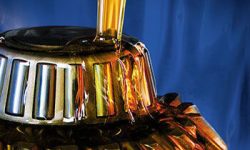Six Ways To Improve Your Oil Analysis Program
The success of any lube analysis program is often dependent on proper planning and execution. Much like an airline flight whose crew must perform a detailed checklist of activities before the plane is approved for takeoff, a lube analysis program should be designed with various checks and balances, standards, procedures, and other verification to ensure its success.
To ensure the success of your program consider these six best practices:
- Establish Proper Sampling Procedures: Sampling is the most important part of any lube analysis program and the quality of your samples is vital to the success of your program. It so important to get consistent samples from the exact same place every time a sample is taken. If your sampling methods are inconsistent then you will most likely have inconsistent and inaccurate test results. To combat this, consider standardizing your sampling method and train all samplers to properly use the method you choose.
- Avoid Delays In Receiving Results: You should ship samples as soon as they are collected. If you wait to send samples to the lab you run the risk of not catching potential problems that can be detrimental to your plant’s operations.
- Learn How To Interpret Test Results: Too often in lube analysis the failure of a program can be attributed to the lack of interpretation of the conditions report and an inappropriate response to the results. When this happens, valuable information is lost. Without a solid understanding of the purpose of lube analysis and the ability to interpret test results they can not be expected to carry out this duty. Your lab should also be adept at interpreting results.
- Communicate With Your Lab's Analysts: In order to create and maintain a world‐class lube analysis program, you need to have the support and dedication of your lab. You should strive to develop a relationship with your lab analyst and have the confidence that you can call upon them at any time to discuss concerns about your equipment or overall program. This can only be possible if your lab is committed to you as well. Your analyst needs to be familiar with your equipment, and more importantly, they need to know your goals and expectations for your program.
- Establish Adequate Performance Tracking: A true predictive maintenance program should be more proactive than reactive. Your program should emphasize routine planned activities focused on monitoring and controlling root causes, which will ultimately diminish the frequency of machine failures. Many programs focus only on measuring machine conditions and completely miss the opportunity to measure the generated benefits their program has produced. Tracking such things as machine availability, replacement parts costs, labor hours on planned and unplanned activities, and lubricant consumption are also important. In order to do this you should identify benchmarks early on so you have something to rank improvements against.
- Give Your Leader Authority: You need the person in charge to be a leader – someone who is knowledgeable, experienced and motivated. But even with the right person in place there are still many obstacles that need to be avoided. One of the toughest and most wide‐spread obstacles is a lack of authority. Many times people that are excited about their position, but they lack confidence to take action because they have no authority. If you are training a new person in a lube analysis program, be patient with them. Remember that training generates confidence. Be sure to invest in their training so they have the confidence to make the right decisions, and empower them to take action.
To learn more ways to improve your program, click here to check out TestOil's eBook on the topic.






